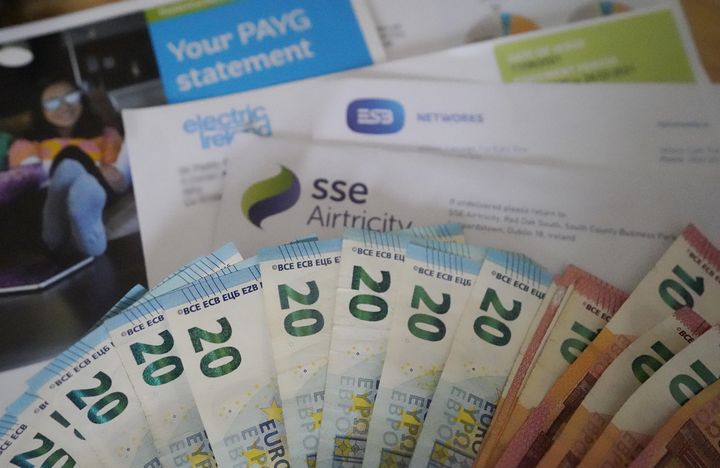
Germany is the most expensive, followed by Denmark and then Ireland, according to data from the EU statistical agency Eurostat.
The latest figures mean electricity is €350 a year more expensive here on average than the rest of the EU, calculations based on the Eurostat figures show.
Electricity prices in this country are 30pc above the European average.
Gas prices in this country are the fifth highest in Europe.
Energy bills have shot up in the last few years in this country after the Russians invaded Ukraine.
The revelation comes after the Government set its face against paying energy credits in the new Budget.
Last month SSE Airtricity hiked electricity bills by 10.5pc, and gas bills by 8.4pc, in a move that will impact around 250,000 electricity customers and 85,000 gas customers.
It blamed rising wholesale energy prices and higher network charges imposed by the energy regulator.
The move is a massive blow to consumers as it comes after a period of price cuts following the easing of the energy crisis that had sent bills soaring when Ukraine was invaded by Russia.
But more than a million electricity and gas customers with Electric Ireland look set to escape any immediate price increases despite rivals hiking costs.
Daragh Cassidy of price comparison site Bonkers.ie said Irish households have been paying electricity prices that are well above the EU average for years now.
“So these latest figures from Eurostat aren’t surprising, unfortunately.”
He said prices in this country are almost 30pc above the EU average.
Prices are also far higher here than in non-EU countries Iceland and Norway.
This means the average household pays around €350 more for their electricity each year compared to our European neighbours, Mr Cassidy said.
The Eurostat figures show that this country is the most expensive for electricity when the net price is looked at. This is before VAT and other taxes are added on.
This is because our VAT rate is currently only 9pc, whereas it is closer to 20pc or more in many other countries.
Mr Cassidy the reasons for expensive energy in this country are complex.
“We’ve a relatively small and dispersed population with too much one-off housing so the costs for the upkeep of our electricity network are very high on a per capita basis,” he said.
The rapid growth of the population and the increase in the number of data centres in recent years also has not helped, he said.
This is putting pressure on the grid.
And in recent years Ireland has had to procure high cost, high emission, emergency gas generation to plug the gap between electricity demand and supply.
“Many of our power plants are also older and smaller compared to those in other countries so we don’t benefit from efficiencies and economies of scale as much, Mr Cassidy said.
We also have a weakly connected grid.
Mr Cassidy said we are quite isolated so we can’t import a huge amount of cheaper electricity from abroad.
He said the interconnector we’re building with France will hopefully improve things when it comes online in 2027 as it will allow us to tap into generally cheaper French electricity.
More wind farms are not bringing down the price of electricity.
Mr Cassidy said wind is far cleaner for the environment and will help us meet our climate change targets and avoid hefty EU fines.
But the price we are paying most wind farms for the electricity they generate is expensive, he said.
#Electricity #prices #year #dearer #country #European #average







